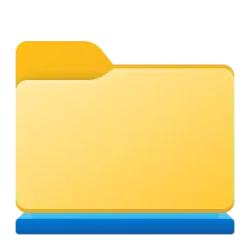This tutorial will show you how to unzip (extract) files from a zipped folder in Windows 11.
Zipped (compressed) files take up less storage space and can be transferred to other computers more quickly than uncompressed files. In Windows, you work with zipped files and folders in the same way that you work with uncompressed files and folders. Combine several files into a single zipped folder to more easily share a group of files.
Reference:
Zip and unzip files - Microsoft Support
Starting with Windows 11 version 22H2 KB5030310 Build 22621.2361, Microsoft adds native support for reading additional archive file formats using the libarchive open-source project such as:
- .tar
- .tar.gz
- .tar.bz2
- .tar.zst
- .tar.xz
- .tgz
- .tbz2
- .tzst
- .txz
- .rar
- .7z
- And more!
- Option One: Extract Specific File(s) from ZIP Folder
- Option Two: Extract All Files from ZIP Folder using Context Menu
- Option Three: Extract All Files from ZIP Folder using File Explorer Command Bar
- Option Four: Extract All Files from ZIP Folder using Command
- Option Five: Extract All Files from ZIP Folder using Right Click Drag and Drop
1 Open the ZIP folder.
2 Drag and drop the items you want from inside the ZIP folder to where you want to extract them.
1 Right click or press and hold on the ZIP folder, and click/tap on Extract All. (see screenshot below)
2 Perform the following actions: (see screenshot below)
- Browse to the folder location where you want to extract all contents inside the ZIP folder to.
The default location will be the same location as the ZIP folder.
- Check (default) or uncheck Show extracted files when complete for what you want.
- Click/tap on Extract.
1 Open File Explorer (Win+E).
2 Browse to and select the ZIP folder. (see screenshot below step 3)
3 Click/tap on Extract All on the command bar of File Explorer. (see screenshot below)
4 Perform the following actions: (see screenshot below)
- Browse to the folder location where you want to extract all contents inside the ZIP folder to.
The default location will be the same location as the ZIP folder.
- Check (default) or uncheck Show extracted files when complete for what you want.
- Click/tap on Extract.
To see more Expand-Archive command usage details, see: Expand-Archive | Microsoft Docs
1 Open Windows Terminal, and select either Windows PowerShell or Command Prompt.
2 Use the command below you want:
A) Type the command below into Windows Terminal, and press Enter. (see screenshot below)
PowerShell -Command "Expand-Archive -LiteralPath '<full path for ZIP>.zip' -DestinationPath '<full path of current location>'"Substitute <full path for ZIP> in the command above with the full path of the ZIP folder.
Substitute <full path of current location> in the command above with the actual full path of the current folder location you want to extract all files to.
For example:
PowerShell -Command "Expand-Archive -LiteralPath 'C:\Users\Brink\Desktop\Zip Folder.zip' -DestinationPath 'C:\Users\Brink\Desktop'"
A) Type the command below into Windows Terminal, and press Enter. (see screenshot below)
PowerShell -Command "Expand-Archive -LiteralPath '<full path for ZIP>.zip' -DestinationPath '<full path of folder>'"Substitute <full path for ZIP> in the command above with the full path of the ZIP folder.
Substitute <full path of folder> in the command above with the actual full path of the folder you want to extract all files into or created and extract all files into.
For example:
PowerShell -Command "Expand-Archive -LiteralPath 'C:\Users\Brink\Desktop\Zip Folder.zip' -DestinationPath 'C:\Users\Brink\Desktop\Folder'"
1 Right click on the ZIP folder while you drag and drop it to the location you want to extract it. (see screenshot below)
2 Click/tap on Extract. (see screenshot below)
3 Perform the following actions: (see screenshot below)
- Check (default) or uncheck Show extracted files when complete for what you want.
- Click/tap on Extract.
4 The ZIP folder will now be extracted to the location. (see screenshot below)
That's it,
Shawn Brink


 .
.










